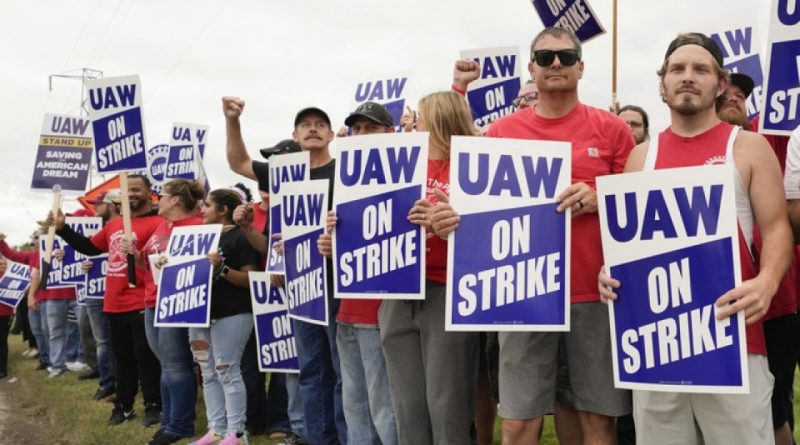Driving Forces: An Update on the UAW Strike
Sander Dawson
Staff Writter
The United Auto Workers (UAW) strike has become a focal point of concern, not only for the automotive industry but also for the broader United States economy. This labor dispute, rooted in the demand for fair wages amid surging inflation rates, has profound implications. As workers across the nation grapple with the ever-rising cost of living, the UAW strike has underscored the challenges faced by blue-collar employees, many of whom find themselves living paycheck to paycheck.
The UAW strike, which commenced on September 15 at a single plant in each of the rust belt’s three largest industrial facilities, had far-reaching repercussions for the automotive giants. Initially impacting General Motors, Ford, and Stellantis, the strike escalated as auto manufacturers remained reluctant to engage in negotiations. This led to a subsequent walkout by workers at an additional 20 plants on September 22.

UAW President Shawn Fain did not mince words when addressing the automakers’ response to negotiations, stating, “Ford and G.M. have refused to make meaningful progress at the bargaining table.” These words lay bare the tensions and frustrations that have simmered throughout the strike.
While General Motors and Ford have been hesitant to compromise, Stellantis—the parent company of brands like Chrysler and Jeep—has taken a somewhat more conciliatory stance. On October 2, Stellantis CEO Carlos Tavares offered a unique proposal to Fain, offering wage increases in each year of a new four-year contract totaling 14.5%. This resulted in a brief pause in walkouts—a development yet to be seen with the other major manufacturers. Market share losses and persistent post-pandemic production challenges may explain Stellantis’ willingness to negotiate with the union.
The strike took a historic turn on September 26 when both President Joe Biden and former President Donald Trump made appearances at a rally in Michigan. Their presence at the picket line sent ripples through the political landscape, illuminating the strategic importance of organized labor in American politics.
The first two weeks of the UAW strike have already tallied staggering economic losses, estimated at $3.95 billion. These losses have far-reaching implications, not only for the auto industry but also for the nation’s GDP and President Biden’s economic performance record. This financial downturn is likely to become a focal point for political opponents as they select their primary candidates for the 2024 election, with the GOP poised to scrutinize the president’s economic track record.
President Biden and former President Trump have both intensified their efforts to court working-class voters in Michigan, a state that has historically leaned blue since 1992 but experienced a notable shift in 2016 when Trump carried it. With its status as a potential swing state in the upcoming election, Michigan’s significance cannot be overstated. The current focus on this battleground state underscores the fierce competition between the two potential candidates.
The UAW strike is more than a labor dispute, it’s a testament to the evolving dynamics of American politics and the enduring influence of organized labor. As the strike continues to unfold, its resolution will hold ramifications that extend beyond the auto industry. Its impact will be felt in the nation’s economy and, ultimately, in the 2024 presidential race—a race that is already beginning to take shape against the backdrop of this historic labor conflict.
Contact Sander at sander.dawson@student.shu.edu


A refreshingly even-handed assessment of this important situation.
Important to keep in mind two of the root policy drivers here.
1 – Super-heated federal government spending which caused the sticky inflation that is harming blue collar workers (who currently have no cost of living escalators in their contract); and
2 – Federal policy that accelerated the shift away from combustion powered vehicles to EVs, which portends less workers needed per vehicle produced and the further loss of union jobs as auto makers shift EV production to non-union, right to work states.